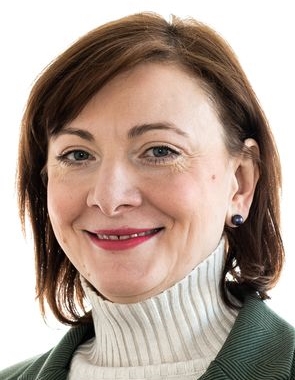IOCB Prague to contribute to a European project on the digitization of human body odors

Robert Hanus, leader of the Chemistry of Social Insects research group at IOCB Prague, has been enrolled in the Hop On Facility program of the European Commission. This facility helps researchers from countries that entered the EU in later rounds of enlargement to join ongoing projects being conducted by colleagues in original member states. Robert is thus joining the European project SMELLODI, which is being pursued by a consortium of seven research centers and technology institutes from Germany, Israel, and Finland. The goal is to establish the foundations for the digitization of human body odors. In the future, the technology could enhance diagnostic and health monitoring capabilities.
SMELLODI, a three-year EIC Pathfinder Open funded project with a grant of nearly three million euros, is initiating a new era of digitizing human olfaction. The project focuses on intelligent electronic recognition and transmission of body odors.
Robert explains: “Our current understanding doesn’t yet allow us to upload odors and, say, send them halfway around the world and then have them regenerated there the way we can with images and sounds. The goal of SMELLODI is to make that possible.”
In addition to essential cutting-edge technology, IOCB Prague is bringing to the SMELLODI project a wealth of knowledge in the field of chemical analysis of volatile substances. Robert’s research group uses a modern two-dimensional gas chromatograph, which is not only extremely sensitive and capable of separating individual components of odors but is also equipped with an olfactometric port. Researchers can thus send selected components of an odor directly into a person’s nose and track their subjective reactions to them.
Robert says he became involved in the project by coincidence. His group primarily uses gas chromatography to study the chemical communication of insects and for recording chemical profiles on the bodies of insects. Nonetheless, in a joint project with colleagues at the Faculty of Science, Charles University, they discovered that the method can also be used to differentiate and quite accurately describe the body odors of individual people. The determination on the part of Robert and his colleagues to pursue activities not directly relating to their original research aims soon put them in the company of leading European experts in the field.
The enthusiasm of Robert’s team is shared by the director of IOCB Prague, Prof. Jan Konvalinka: “It’s extraordinarily interesting to find out that chemical substances decide who smells good or bad to us and what things evoke either positive or negative emotions in us. It’s fascinating to watch how Robert’s work on insect pheromones can be applied to human body odors.”

Robert adds: “Thanks to the Hop On program, even at more than forty years of age I can begin exploring a completely different area of research. Grant agencies would hardly provide separate funding for an individual with no professional history in a given field. In the Hop On Facility project, however, a key criterion is the significance of a new partner for the entire consortium. Clearly it makes sense to constantly strive for something new.”
Part of the Horizon Europe framework program, the Hop On Facility offers applicants from thirteen EU countries, among them Czechia, an opportunity to join ongoing grant projects. A list of suitable projects is posted on the Funding & Tender Opportunities Portal (FTOP), and the European Commission updates it each week with new offers. Proposals for a new partner in an ongoing research endeavor are assessed by a group of independent experts, and the addition of a new partner must facilitate achievement of the original goals without diverting the project.







